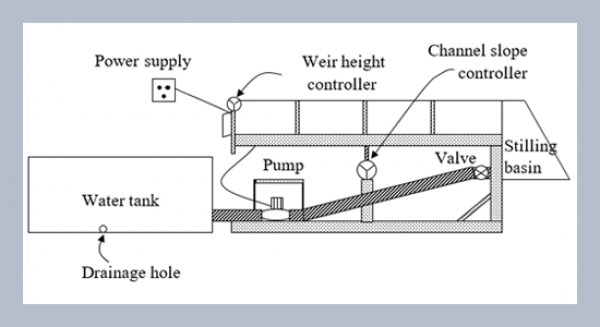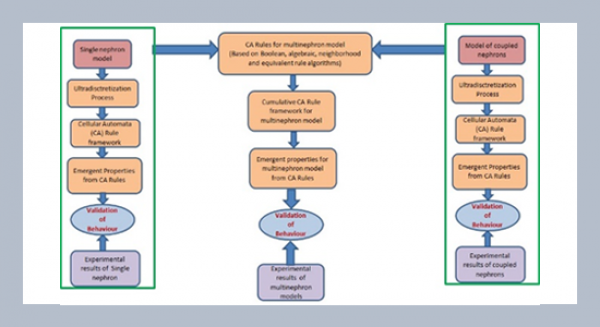REFERENCES
- [1] Ahuja, R. K., Magnanti, T. L., and Orlin, J. B. 1993. “Network Flows, Theory, Algorithms and applications”. Prentice Hall, New Jersey.
- [2] Bazarra, M. S., Jarvis, J. J., and Sherali, H. D. 1990 “Linear Programming and Network Flows”. 2nd Edition, Wiley, New York.
- [3] Campos, L. and Gonzalez Munoz, A. 2000. A subjective approach for ranking fuzzy number, Fuzzy Sets and Systems, 29: 145-153.
- [4] Campos, L. and Verdegay, J. L. 1989. Linear programming problems and ranking of fuzzy numbers. Fuzzy Sets and Systems, 32: 1-11.
- [5] Chanas, S., Delgado, M., Verdegay, J. L., and Vila, M. 1995. Fuzzy optimal flow on imprecise structures. European Journal of Operational Research, 83: 568-580.
- [6] Chanas, S. and Kolodziejczyk, W. 1982. Maximum flow in a network with fuzzy arc capacities. Fuzzy Sets and Systems, 8: 165-173.
- [7] Chanas, S. and Kolodziejczyk, W. 1984. Real-valued flows in a network with fuzzy arc capacities. Fuzzy Sets and Systems, 13: 139-151.
- [8] Chanas, S. and Kolodziejczyk, W. 1986. Integer flows in network with fuzzy capacity constraints. Networks, 16: 17-31.
- [9] Chang, P. T. and Lee, E. S. 1994. Ranking of fuzzy Sets based on the concept of existence. Computers and Mathematics with Applications, 27: l-21.
- [10] Chen, S. H. 1985. Operations on fuzzy numbers with function principal. Tamkang Journal of Management Sciences, 6: 13-25.
- [11] Chen, S. J. and Chen, S. M. 2003. A new method for handling multicriteria fuzzy decision making problems using FN-IOWA operators. Cybernetics and Systems, 34: 109-137.
- [12] Chen, S. J. and Chen, S. M. 2007. Fuzzy risk analysis on the ranking of generalized trapezoidal fuzzy numbers. Applied Intelligence, 26: 1-11.
- [13] Chen, S. M. and Chen, J. H. 2009. Fuzzy risk analysis based on the ranking generalized fuzzy numbers with different heights and different spreads. Expert Systems with Applications, 36: 6833-6842.
- [14] Chen, S. H. and Li, G. C. 2000. Representation, ranking and distance of fuzzy number with exponential membership function using graded mean integration method. Tamsui Oxford Journal of Mathematical Sciences, 16: 125-131.
- [15] Chen, S. M. and Wang, C. H. 2009. Fuzzy risk analysis based on ranking fuzzy numbers using alpha-cuts, belief features and signal/noise ratios. Expert Systems with Applications, 36: 5576-5581.
- [16] Cheng, C. H. 1998. A new approach for ranking fuzzy numbers by distance method. Fuzzy Sets and Systems, 95: 307-317.
- [17] Chu, T. C. and Tsao, C. T. 2002. Ranking fuzzy numbers with an area between the centroid point and original point. Computers and Mathematics with Applications, 43: 111-117.
- [18] Diamond, A. 2001. A fuzzy max-flow min-cut theorem. Fuzzy Sets and Systems, 119: 139-148.
- [19] Ford, L. R. and Fulkerson, D. R. 1956. Maximal flow through a network. Canadian Journal of Mathematics, 8: 399-404.
- [20] Fortemps, P. and Roubens, M. 1996. Ranking and defuzzification methods based on area compensation. Fuzzy Sets and Systems, 82: 319-330.
- [21] Fulkerson, D. R. and Dantzig, G. B. 1955. Computation of maximum flow in network. Naval Research Logisics Quarterly, 2: 277-283.
- [22] S Hernandes, F., Lamata, M. T., Takahashi, M. T., Yamakami, A., and Verdegay, J. L. 2007. An algorithm for the fuzzy maximum flow problem. In: Proceeding of IEEE International Fuzzy Systems Conference: 1-6.
- [23] Hsieh, C. H. and Chen, S. H. 1999. Similarity of generalized fuzzy numbers with graded mean integration representation. In: Proceedings of the Eighth International Fuzzy System Association World Congress, Taipei, Taiwan, Republic of China, 2: 551-555.
- [24] Jain, R. 1976. Decision-making in the presence of fuzzy variables. IEEE Transactions on Systems, Man and Cybernetics, 6: 698-703.
- [25] Ji, X., Yang, L. and Shao, Z. 2006. Chance constrained maximum flow problem with arc capacities, Lecture Notes in Computer Science, Springer- Verlag, Berlin, Heidelberg, 4114: 11-19.
- [26] Kaufmann, A. and Gupta, M. M. 1985. “Introduction to Fuzzy Arithmetic: Theory and Applications”. Van Nostrand Reinhold, New York.
- [27] Kim, K. and Roush, F. 1982. Fuzzy flows on network. Fuzzy Sets and Systems, 8: 35-38.
- [28] Kumar, A., Bhatia, N. and Kaur, M. 2009. A new approach for solving fuzzy maximal flow problems. Lecture Notes in Computer Science, Springer-Verlag, Berlin, Heidelberg, 5908: 278-286.
- [29] Kumar, A., Singh, P., Kaur, A., and Kaur, P. 2010. RM approach for ranking of generalized trapezoidal fuzzy numbers. Fuzzy Information and Engineering, 1: 37-47.
- [30] Kumar, A., Yadav, S. P., and Kumar, S. 2008. Fuzzy system relibility using different types of vague sets. International Journal of Applied Science and Engineering, 6: 71-83.
- [31] Liou, T. S. and Wang, M. J. 1992. Ranking fuzzy numbers with integral value. Fuzzy Sets and Systems, 50: 247-255.
- [32] Liu, S. T. and Kao, C. 2004. Network flow problems with fuzzy are lengths. IEEE Transactions on Systems, Man and Cybernetics, 34: 765-769.
- [33] Mahapatra, G. S. and Roy, T. K. 2006. Fuzzy multi-objective mathematical programming on reliability optimization model. Applied Mathematics and Computation, 174: 643-659.
- [34] Taha, H. A. 2003. “Operational Research: An Introduction”. Prentice-Hall, New Jersey.
- [35] Wang, Y. J. and Lee, H. S. 2008. Therevised method of ranking fuzzy numbers with an area between the centroid and original points. Computers and Mathematics with Applications, 55: 2033-2042.
- [36] Yong, D., Wenkang, S., Feng, D., and Qi L. 2004. A new similarity measure of generalized fuzzy numbers and its application to pattern recognition. Pattern Recognition Letters, 25: 875-883.
- [37] Zadeh, L. A. 1965. Fuzzy sets. Information and Control, 8: 338-353.















